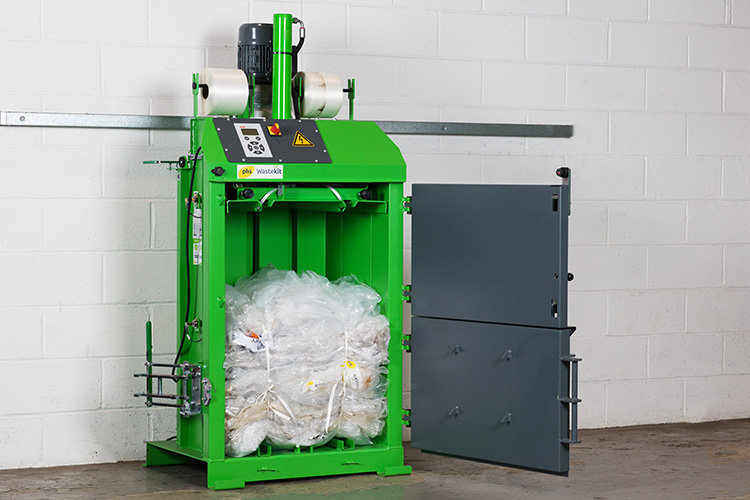Understanding the Landfill Process and What It Means For Your Waste

How much thought have you given to where your waste goes? For any business or organisation, it’s an important thing to consider.
Landfills remain a significant part of waste disposal in the UK, but reducing the amount of waste sent to these sites is essential for environmental sustainability. Understanding how landfills work and what it means for your waste can help you adjust your waste management approach and find solutions to cut back on non-recyclable waste.
Take a closer look at the landfill process to help you make positive changes to your approach to waste.
Landfill in the UK
There are several ways to tackle waste in the UK. While the Government is committed to reducing waste and maximising resources, landfills are still used widely for waste disposal. From
March 2025, waste collectors and workplaces will have a legal obligation to separate dry recyclables, food waste and black bin waste, or face penalties for non-compliance. While this could see significant decreases in the amount of waste that ends up in landfill, there is still a lot of work to be done to help meet sustainability targets and reduce the impact of waste on the environment.
There are currently around 540 landfill sites in the UK, with businesses contributing significant amounts of waste to them each year.
What waste goes to a landfill?
Landfills are primarily used for non-recyclable waste that cannot be repurposed through other disposal methods. This includes general household waste, some industrial materials, and certain types of construction materials. However, recyclable items, including cardboard, plastics, and metals, sometimes end up in landfills due to inefficient waste management practices.
How much waste goes to landfills in the UK?
In recent years, the UK has made significant strides in reducing landfill dependency. Government statistics show that landfill waste has decreased dramatically from the early 2000s. However, millions of tonnes of waste still make their way to landfills each year, much of which could be recycled or otherwise diverted. This shows the need for improved waste management strategies and technologies across businesses and organisations.
How the landfill process works
The landfill process begins with waste collection and transportation to designated landfill sites. Once at the site, waste is deposited into lined cells designed to prevent leachate (liquid from waste) from contaminating the environment. The waste is compacted and covered with soil or other materials to reduce odours and deter pests. Over time, anaerobic decomposition occurs, producing methane gas, which can be captured for energy use.
While these measures aim to mitigate environmental impact, landfills continue to be a significant source of greenhouse gas emissions in the UK and beyond.
Cutting down your landfill waste
Finding ways to cut down your landfill waste can reduce how much your business contributes to this ongoing issue. From reducing its volume to more effective recycling, there are different measures you can take to reduce your landfill waste, including:
Conduct a waste audit
A waste audit is an important first step in understanding your waste generation patterns. By identifying the types of waste your business produces, you can determine areas where reduction, reuse, or recycling can be implemented effectively. The
phs Wastesaving Audit can support your business in helping you understand the way your business currently handles waste, and identify ways for you to cut costs and save money, increase safety, and improve your carbon footprint
Recycle as much as possible
Recycling is one of the simplest ways to reduce landfill contributions. Cardboard, plastic, and metal are some of the most commonly recyclable materials. Implementing waste balers can streamline this process by compacting these items into simple, manageable bales, making them easier to store, transport, and recycle.
Use waste balers and compactors to reduce waste volume
Waste balers and compactors are game-changing tools for businesses looking to minimise landfill waste. These machines reduce waste volume, making it more economical to transport and easier to recycle. By compacting materials like cardboard and plastic, businesses can decrease their reliance on landfill sites and cut their waste management costs too.
Review your waste management regularly
Regularly reviewing your waste management practices ensures that your processes remain efficient and effective. Look for opportunities to introduce new recycling initiatives, replace inefficient systems, or upgrade to more advanced waste management equipment.
Why using a waste baler could benefit your business
Investing in a waste baler is not just a step towards sustainability - it’s a smart business decision! Compacting waste helps your business reduce the frequency of waste collections, lowering transport costs and carbon emissions. Baling recyclable materials also makes them more attractive to recycling facilities, helping you make money from your unwanted cardboard and plastic. Adopting a waste baler also demonstrates your organisation’s commitment to sustainability, boosting your brand reputation and aligning with growing environmental expectations.
Avoid the landfill - try waste balers and compactors from phs Wastekit
Understanding the landfill process can help you make smarter decisions about your waste management practices, and phs Wastekit is here to help you out. Adopting solutions like waste balers can help your business cut down on landfill waste as well as improve efficiency, reduce costs, and support the environment. Explore our range of waste balers and compactors and transform your waste management strategy today.